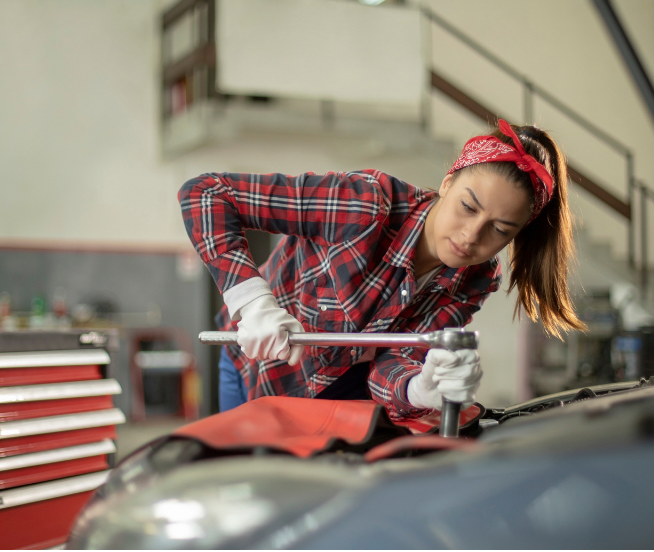

While times are changing, it’s still not common to find many young women in the high school automotive class. Learning the necessities of a vehicle is something more often taught to men than to women. This means the roads and freeways are full of people who may not have been taught how to help themselves in the case of an emergency.
As East Texas’ trusted local mechanic, Stewart’s Donnybrook Automotive puts the safety of every driver as our top priority. We understand that knowing the necessities as a woman driver can make the difference between a serious situation and a good story about how you rescued yourself.
Taking your car, truck, or SUV to the mechanic is helpful and necessary. When it comes to dealing with issues such as a broken belt, faulty air conditioner, oil change, or other general car repair and general maintenance, professional mechanics know best. However, it’s also necessary to know how to help yourself. Especially if you’re not able to get roadside assistance.
Part of being prepared is having any and all necessities on hand. The other part is knowing your way around your vehicle and understanding those necessities. We’ll start with what necessities every woman driver should have available in her car or truck.
Since most navigation these days is done via cell phone, make sure you have your cell phone. How many of us have stories about getting lost and then our cell phone dies?…and we have no charger. Have a phone charger you keep exclusively in the car, so you’re never caught without. If you want to get more technical, you could purchase a multi-use charger to make sure you travel with all your gadgets fully charged.
You might think carrying jumper cables would be smart in the event of a dead battery. However, as cars continue to advance, jumper cables are no longer safe for newer electronic computer-controlled automobiles. A self-contained battery jump box is the thing to have in the event of a dead car battery. It’s a much safer jump option and will keep you prepared out on the road!
A first aid kit and flashlight are always useful and handy items to have in your vehicle. Your necessities might change depending on the region, climate, or season. Extra drinking water is a good idea no matter where you are. If you’re in a rural area or one with a lot of snow, flares can be an important item to add to your emergency kit. If it’s snowy, it’s important to have survival gear such as blankets, extra clothes, and even a shovel available.

The necessity of knowing your way around your vehicle can be a bit more challenging. If you don’t have someone to teach you, then thank goodness for YouTube! The internet is full of helpful video tutorials to learn about almost everything about your vehicle. (You can also ask your local mechanic for a quick tutorial, although compensation might be required.)
Knowing these necessities can make all the difference between an inconvenient breakdown and a scary emergency situation.
Know how to change your wiper blades. While this might not seem like a big deal, it can be extremely dangerous if your wipers fail you in heavy rain or snow.
Malfunctioning wipers can even stop your driving altogether.
Keep an extra pair in your car just in case. Know how to change them, and practice taking them on and off.
Having the jumper cables in your vehicle is one thing, but knowing how to use them is another. Make sure you practice opening and securing the hood and taking the cables on and off.
Knowing how to change a tire is one of those things we all hope we’ll never be tested on. However, it is a necessity as a woman driver to know where your spare tire-changing accessories are and how to remove and use them.
Review your manual for most of this information.
Practice taking out the equipment and jacking up your car in the safety of your own driveway. Being comfortable taking out the equipment and using it to change the tire can make all the difference in a stressful roadside emergency.
It’s necessary to know where your various fluids are: windshield wiper, oil, radiator—and understand how to check and fill them if necessary.
Especially on long road trips, it can be crucial to know where your oil and coolant tanks are.
A few other suggestions are making sure you have numbers for evening and weekend assistance, as well as your state inspection center.